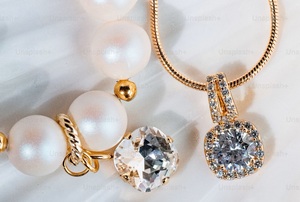-
 Retrouver dansMembres
Retrouver dansMembres Retrouver dansVidéos
Retrouver dansVidéos Retrouver dansChaînes
Retrouver dansChaînes
This website uses cookies to ensure you get the best experience on our website.
To learn more about our privacy policy Cliquez iciPréférence de confidentialité
- Mots clés - #Women Jewelry #mother of pearl #precious stone
-
- Dernière mise à jour 11 mars 2024 0 commentaire , 242 vues, 0 comme
More from Dryden Jewelry
More in Politics
Related Blogs
Les archives
Beyond Borders: International Influences in Handmade Mother of Pearl Jewelry
Corps
Handmade mother of pearl jewelry is a testament to the timeless beauty and cultural richness that transcends borders. The artistry and craftsmanship involved in creating these pieces go far beyond mere adornment; they tell stories of tradition, heritage, and global connections. In this blog, we will explore the fascinating world of handmade mother of pearl jewelry, delving into the international influences that make these creations truly unique.
The Global Palette of Mother of Pearl:
Mother of pearl, also known as nacre, is an iridescent substance that forms the inner layer of mollusk shells. Renowned for its luminosity and captivating colors, it has been used for centuries in various cultures around the world. From Asia to the Americas, the use of mother of pearl in jewelry making has been a shared practice that reflects the appreciation for nature's beauty.
Asian Elegance:
In Asia, particularly in countries like China, Japan, and India, mother of pearl has a rich history in jewelry making. The delicate sheen and iridescence of mother of pearl lend themselves well to intricate designs inspired by nature and spirituality. Chinese artisans often use mother of pearl to create exquisite pieces depicting scenes from nature, like blooming flowers and serene landscapes. In Japan, mother of pearl is incorporated into traditional accessories such as inlays for kimonos and hair ornaments, showcasing the cultural significance of this material.
Indian craftsmanship, with its vibrant and intricate designs, embraces mother of pearl to create stunning pieces that reflect the country's diverse heritage. From traditional motifs like paisleys to more contemporary designs, Indian mother of pearl jewelry showcases a perfect blend of tradition and modernity.
European Opulence:
In Europe, mother of pearl has been utilized in jewelry making for centuries, reflecting a sense of opulence and refinement. During the Renaissance, intricate mother of pearl inlays adorned the jewelry of royalty and aristocracy. The luminescent quality of mother of pearl added a touch of elegance to pieces such as cameos, creating timeless treasures that have transcended generations.
The Americas' Cultural Tapestry:
The use of mother of pearl in jewelry making is not limited to the Old World; it has also woven itself into the cultural tapestry of the Americas. Indigenous peoples in North and South America have a rich history of incorporating mother of pearl into their jewelry, often using it in conjunction with other materials like turquoise and silver. The resulting pieces tell stories of spirituality, connection to the land, and the vibrant cultures that have thrived for centuries.
Modern Fusion:
In contemporary times, the beauty of handmade mother of pearl jewelry continues to captivate global audiences. Artisans from different corners of the world draw inspiration from diverse cultural elements, creating pieces that blend traditional techniques with modern aesthetics. This fusion of styles and influences has given rise to a new era of mother of pearl jewelry that appeals to a global audience, transcending geographic boundaries.
Sustainability and Ethical Practices:
As the world becomes more conscious of environmental and ethical concerns, the demand for sustainable and ethically sourced materials is on the rise. Handmade mother of pearl jewelry, when crafted with a commitment to ethical practices, not only preserves the beauty of nature but also contributes to the livelihoods of artisans around the world. Many jewelry makers are now prioritizing sustainable sourcing and fair trade practices, ensuring that the beauty of mother of pearl is not tarnished by unethical practices.
Conclusion:
Handmade mother of pearl jewelry is a testament to the shared appreciation for nature's beauty and the cultural richness that transcends borders. From Asia to the Americas, the global influences on mother of pearl jewelry have created a diverse and captivating art form. As we continue to embrace the beauty of these creations, let us also celebrate the artisans who bridge the gaps between cultures, creating pieces that tell stories of tradition, heritage, and the interconnectedness of our global community.










commentaires